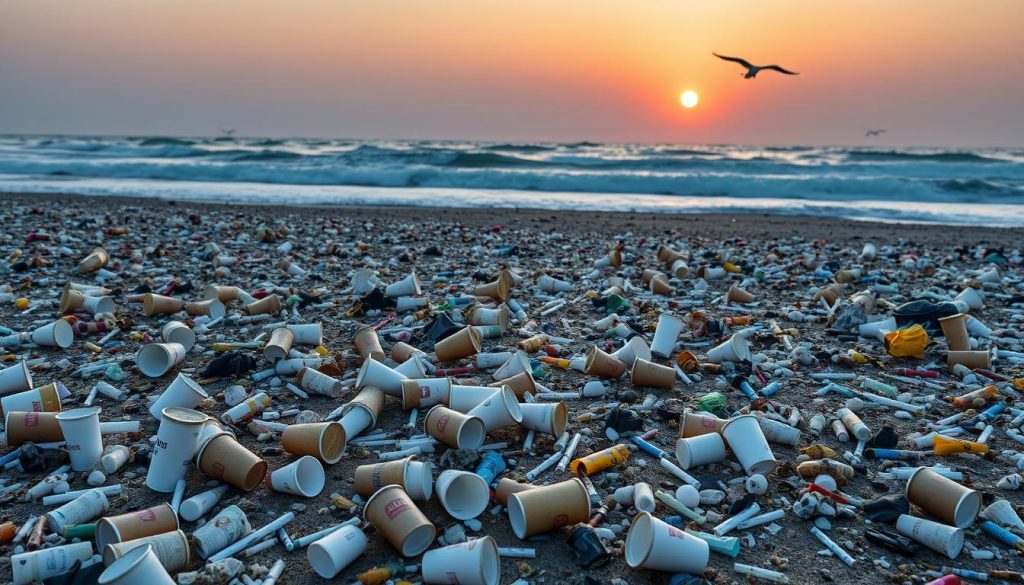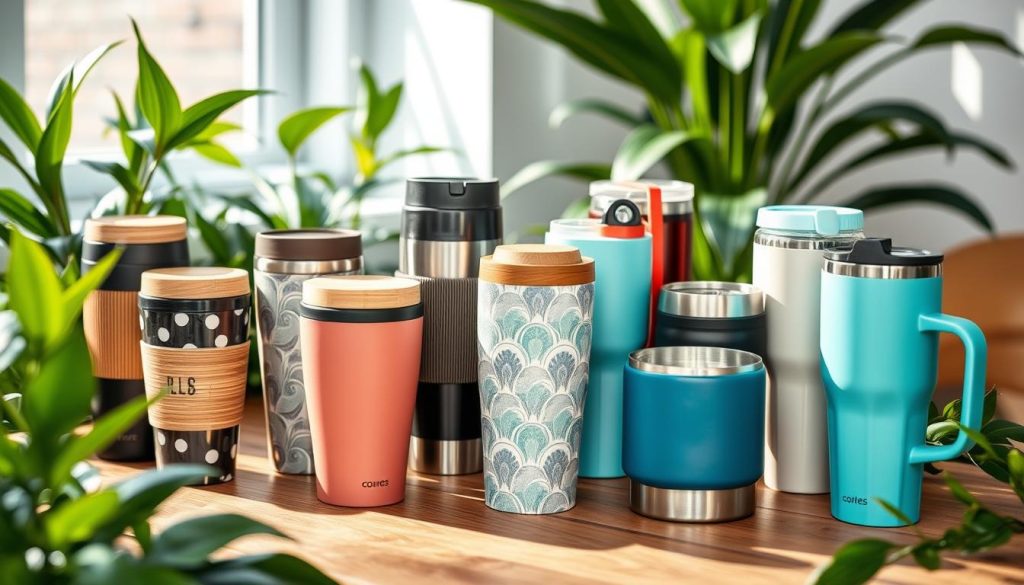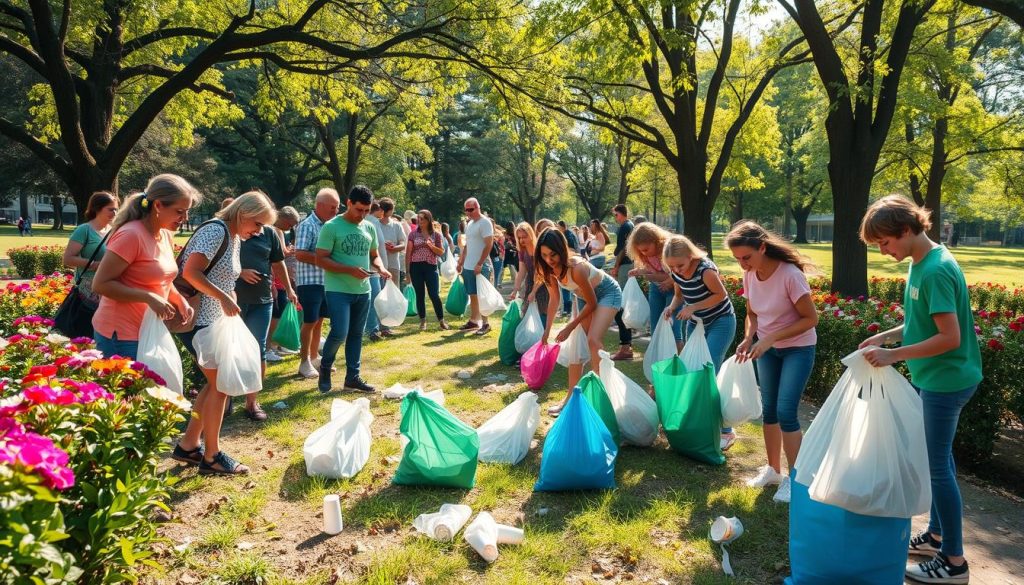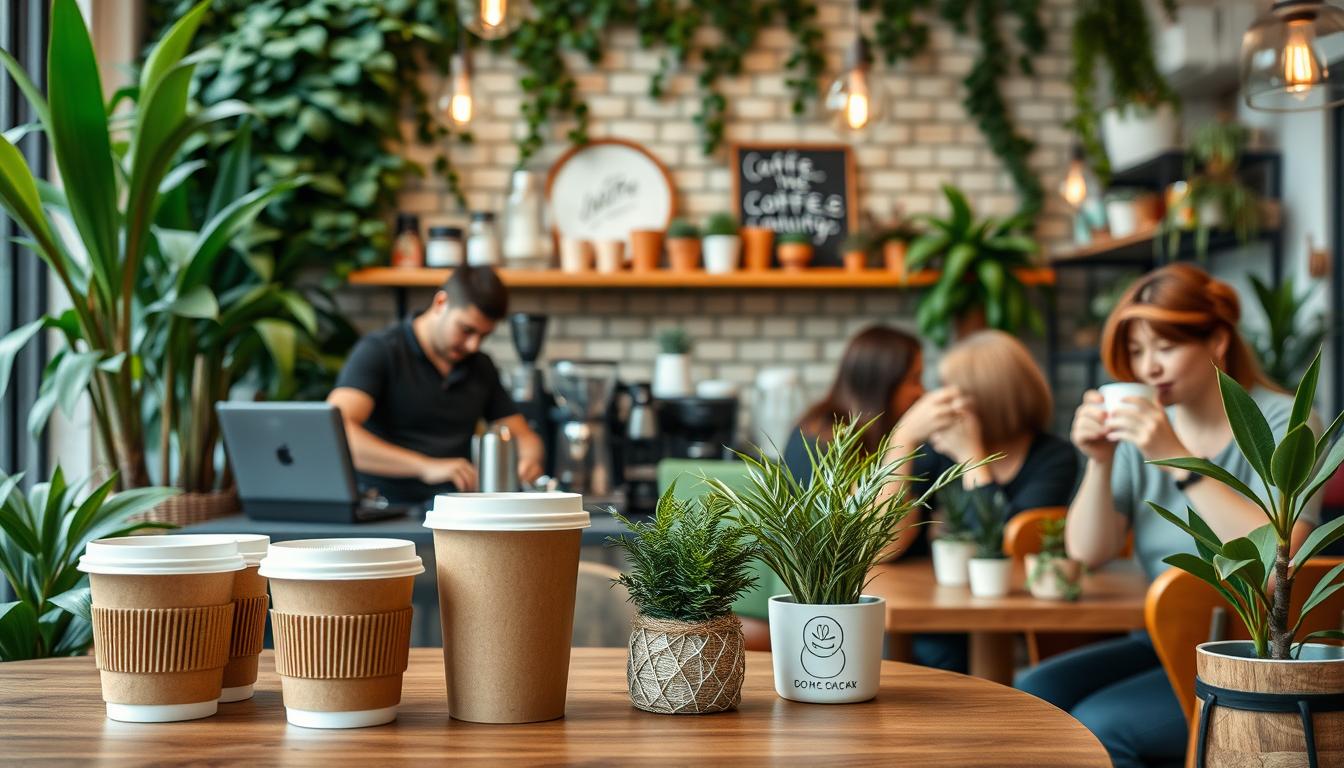As a coffee lover, I’ve always enjoyed my daily coffee ritual. But, I noticed how many single-use coffee cups were around me. Grabbing a quick coffee had become a habit, but it hurt the environment.
This made me start looking for ways to make my coffee habits more eco-friendly. I wanted to make a real change.
The harm single-use coffee cups do to the environment is huge. They use a lot of energy and resources to make. Plus, recycling them is hard, adding to the global waste problem.
Learning about eco-friendly coffee options showed me how we can make a difference. Small actions can have big effects.
I want to encourage others to cut down on single-use coffee cups. I’ll share my journey, the challenges, and the solutions I found. My hope is to help my community make better choices for a cleaner future.
Why I Care About Reducing Single-Use Coffee Cups
As a coffee lover, I’ve always loved my daily coffee ritual. But, I soon realized the huge environmental harm of single-use coffee cups. Seeing so many disposable cups in coffee shops and on streets made me worry about waste.
My Personal Experience with Coffee Habits
I used to grab a new disposable cup every time I wanted coffee. It was easy and didn’t bother me. But, as I thought more about the environment, I saw how my coffee habits were harming it.
The Environmental Impact I Observed
The harm of single-use coffee cups became clear to me. Most of these cups go to landfills, taking years to break down and harming the air. Making and moving these cups also pollute the air. Seeing all this waste, I knew I had to act.
How Coffee Culture Influences Waste
- The rise of convenient, on-the-go coffee culture has normalized the use of disposable cups.
- Many coffee shops encourage the use of single-use cups by offering discounts for bringing your own reusable cup.
- The fast-paced nature of modern life leaves little time for consumers to think about the environmental impact of their coffee habits.
Understanding how coffee culture adds to waste problems motivates me to find a green solution. By cutting down on my coffee cup waste, I hope to encourage others to help make our future greener.
Understanding the Problem of Single-Use Coffee Cups

Single-use coffee cups are a big problem. They’re often made of paper with a plastic lining. This makes them a major source of plastic pollution and waste.
Statistics on Coffee Cup Waste
Every year, Americans throw away about 50 billion single-use coffee cups. That’s enough to circle the earth 125 times! Most of these cups go to landfills, where they take up to 30 years to break down.
The Problems with Recycling Coffee Cups
- The plastic lining in most disposable cups makes them hard to recycle. The materials are not easily separated.
- Many recycling facilities don’t accept coffee cups because of this issue. So, most of them end up in landfills or incinerators.
- Even if coffee cups are recycled, the process is expensive and uses a lot of energy. This makes it hard to see the sustainability benefits.
High consumption and low recyclability make single-use coffee cups a big problem. This has led to a growing push for more sustainable alternatives.
My Journey to Switching to Reusable Coffee Cups

As a coffee lover, I worried about the waste from single-use cups. They end up in landfills and oceans. So, I started using reusable coffee mugs to help the planet.
Choosing the Right Reusable Cup for Me
Finding the right reusable cup was important. I wanted one that looked good and kept my coffee hot. I chose a stainless steel mug with great insulation and a cool design.
Tips for Remembering My Reusable Cup
- I keep my reusable cup with my keys and wallet, so it’s easy to grab when I leave.
- I set reminders on my phone to make sure I have my cup before I go out.
- I always have a spare cup in my car, just in case I forget my main one.
How to Clean and Maintain My Reusable Cup
It’s important to keep my cup clean for a good zero-waste coffee experience. I rinse it after each use and sometimes wash it with soap and water. I dry it well before using it again to avoid smells and germs.
Switching to reusable cups has changed my life. It’s helped the environment and made my coffee time better. I think everyone should try using reusable coffee mugs.
Supporting Sustainable Coffee Shops
I’ve learned about the harm single-use coffee cups cause. So, I choose to support local coffee shops that care about the planet. By picking eco-friendly coffee and supporting shops that do the same, I help reduce waste and push for change in the coffee world.
Finding Local Shops that Promote Sustainability
I look for coffee shops that focus on being green. They might give discounts for reusable cups or use cups that can be composted or recycled. They also source beans from eco-friendly coffee brands.
- I check their website or social media to see their green efforts.
- I ask baristas about their practices and if they encourage using reusable cups.
- Talking to the local community helps me find shops that care about the environment.
Benefits of Choosing Eco-Friendly Coffee Brands
When I can, I choose eco-friendly coffee. This supports coffee shop sustainability initiatives and helps reduce waste. It also pushes for change in the coffee industry.
- Eco-friendly coffee brands use sustainable farming and source beans ethically, lowering coffee’s environmental impact.
- They often use packaging that can be composted or recycled, cutting down on waste.
- By picking eco-friendly coffee, I tell the industry that sustainability matters to me.
By supporting local coffee shops that focus on sustainability, I help grow a greener coffee culture. Every cup of eco-friendly coffee I enjoy makes a difference.
Joining the Movement for Change

I’m passionate about reducing single-use coffee cups and promoting sustainable coffee practices. I’ve taken steps to spread awareness and get involved in my local community. Simple actions can make a big difference.
How I Spread Awareness Among Friends
I’ve shared my journey with friends and family. I told them about switching to a reusable coffee cup and its positive impact. Leading by example, I’ve inspired others to change their coffee habits.
I’ve also educated those around me about single-use coffee cup waste and sustainable coffee practices. Sharing articles on social media or having casual conversations helps raise awareness. This encourages others to join the movement.
Engaging in Community Clean-Up Events
I’ve also joined community clean-up events to reduce waste and litter. These events let us see the direct impact of our efforts. By working together, we clean up neighborhoods and beaches, removing single-use coffee cups and other debris.
These clean-up events improve the environment and build community. Seeing the waste we remove reminds us of the positive change we can make together.
The Bigger Picture: Advocating for Policy Change
Reducing the environmental impact of single-use coffee cups is crucial. Understanding the regulatory landscape is key. Local and state policies can drive sustainable practices in the coffee industry.
Understanding Local Regulations on Waste Management
Many cities have rules to tackle coffee cup waste. These might include bans on disposable cups or mandates for recycling. Knowing these policies helps me support eco-friendly businesses.
How I Can Support Legislation for Eco-Friendly Practices
I can do more than just choose eco-friendly options. I can push for policy changes too. This might mean contacting officials, attending meetings, or commenting publicly. Joining others, we can make the coffee industry more sustainable.

